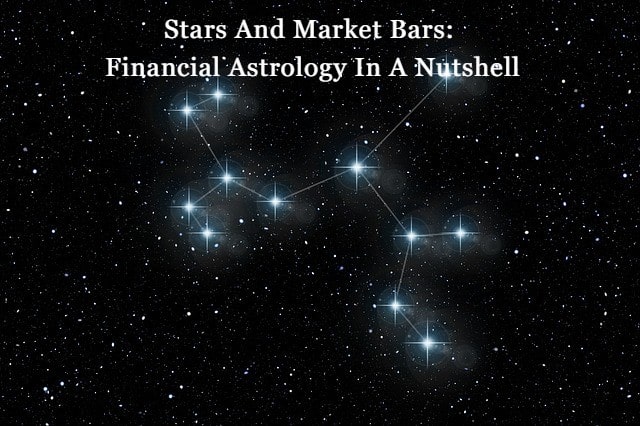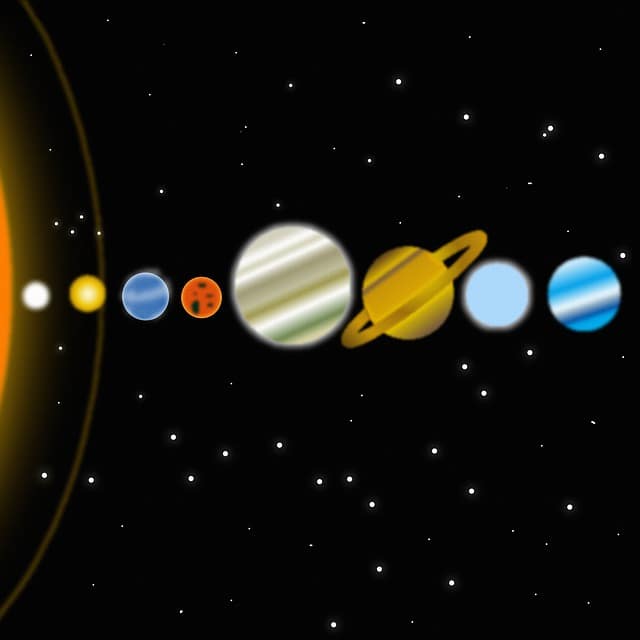
A lot of people may have a passing interest in astrology. But, a growing number of speculators, investors, and even gamblers are looking to financial astrology to get their gains.
Those who subscribe to the concept of financial astrology seek to discern good timing. Depending on the stars, there are good and bad times to engage with the market. So whether you’re analyzing stocks or currencies, buying property, or even looking to win big at the tables, you might get something out of finance horoscopes.
As usual, this is not for the faint of heart. While financial astrology can and does lead to success, it doesn’t guarantee anything. As long as you keep the risks inherent in all financial dealings in mind, you should be fine.
Basics Of Financial Astrology
On the one hand, financial astrology isn’t entirely new ground if you understand how the planets work. Specifically, you will need a fundamental knowledge of both the astrological planets and their transiting aspects.
Aside from the astrological aspect, you will also need to be proficient with the financial aspect. Depending on the area of finance you’re engaging in, the context of the astrological planets changes in turn.
With that said, let’s see what it takes to be financial astrologers.
How The Moon Affects The Market
First and foremost, consider the Moon in your financial astrology basics for success. It represents the fluctuations of the market in the short term. It is also often the most basic tool for timing events.
Of course, you’ll have to follow the basic maxim of buy low and sell high, but you can augment that with judicious use of the moon as a timer.
Eclipses and Phases

The phases of the moon often coincide with the strength of the financial sector. In general, markets often do better on dates near a new moon. In contrast, the markets are often weaker on dates that are near a full moon.
While on the topic of the moon’s phases, eclipses are huge events in financial astrology. Essentially, every solar eclipse is a new moon, and every lunar eclipse is a full moon.
There’s no denying that both eclipses are powerful influences in their own right. However, the solar eclipse is the more powerful of the two. With that in mind, it’s a good rule of thumb to be wary of the dates surrounding a solar eclipse.
The Apogee – Perigee Cycle of the Moon
The orbit of the moon around the earth isn’t a perfect circle. Instead, it’s slightly elliptic. What this means is that there are times when the moon is closer and farther to earth than usual.
When the moon is closest to earth, it’s called a lunar perigee. Conversely, when the Moon is farthest from the Earth, it’s called a lunar apogee.
But how does it tie into the state of the financial sector? Well, it isn’t unheard of for the market prices to whiplash the other way during a lunar apogee or perigee.
By paying attention to these special dates, you can prepare for quick short-term disruptions as they come.
The Declination Cycle
Since astrology looks at the heavenly bodies from the earth’s perspective, the moon can appear higher or lower on the horizon. This position is called the declination of the moon.
Financially speaking, the moon’s high and low extremes have a similar reversing effect on the market as the apogee and perigee.
Note that while it’s not as powerful as the two, its influence can add up. It is especially true when the declination coincides with other lunar cycles.
The Cycle of the North Lunar Node
While many of the moon’s cycles signify short-term events, the lunar node cycle can show when long-term changes can pop up. Here, we’re looking specifically at the north node.
With a cycle that spans 18.7 years, the north node seems to correspond with trends in business and finance. What this means is that the high and low points of the cycle coincide with the high and low points of the markets.
Finding these points shouldn’t be hard if you know what to look for. The high point of the north lunar cycle happens when the north node transits through Leo. The low point of the north lunar cycle occurs when the north node transits through Aquarius.
The Effects of Transiting Planets In A Nutshell
Long story short, transiting planets represent specific actions and events in the market.
On the most basic level, the transiting planets within the context of Financial astrology represent certain types of action.
Listed below are the planets and what they represent:

- Moon: fluctuations in the short-term
- Mercury: movements in the market, speed in general
- Venus: modest growth
- Mars: competition, beginning of long-term movements in the market
- Jupiter: overall positivity, growth, success, risk of overreach
- Saturn: overall negativity, downturns, complications
- Uranus: significant market volatility
- Neptune: lack of certainty and feasibility
- Pluto: Permanent long-term changes
The Effects of Aspects In A Nutshell
Basically speaking, price increases come with benefits bearing favorable aspects. However, the opposite is also true as price decreases come along with malefics and their unfavorable aspects.
Conflicting Aspects
The markets are like a beast with a mind of its own. It can throw you off despite your most meticulous planning.
With that said, the markets can have moods. And you can spot these dangerous moods during dates with conflicting aspects. While it’s not necessarily a financial death knell, you can never really be sure what happens next.
During these times, it’s usually for the best to wait it out and see where the market goes from there.
Mercury and Venus
While all the planets have their own influences, you would do well to pay extra close attention to Mercury and Venus.
After all, it makes sense to keep an eye on Mercury. It is the planet that shares a name with the Greek god of trade and wealth. And don’t forget about the planet of wealth and abundance, Venus.
Mercury’s Conjunction

Mercury, in particular, can be a useful timing tool. You can see high-volume days coming when the Sun and Mercury are conjunct. This conjunction happens approximately every six weeks.
The Speed of Mercury and Venus
Aside from its conjunctions, Mercury’s day-to-day motions are an important market indicator.
If Mercury seems to be unmoving, the market is bound to have a low volume that day; however, the market trend shifts along with Mercury if it speeds up or slows down.
In a similar fashion, Venus’ speed can also indicate market trends. Unlike Mercury, however, Venus is an indicator for more long-term trends.
The Mercury and Venus Retrograde
Last but not least, you want to watch out for the dates of Mercury and Venus’ retrogrades. Mercury goes into retrograde three times annually. Venus, in comparison, goes into retrograde approximately every 18 to 20 months. Each of its retrogrades lasts for about 40 to 43 days.
Remember that retrogrades often represent the reversals of energies. So it’s usually a bad time to engage the markets when either planet goes into retrograde.
